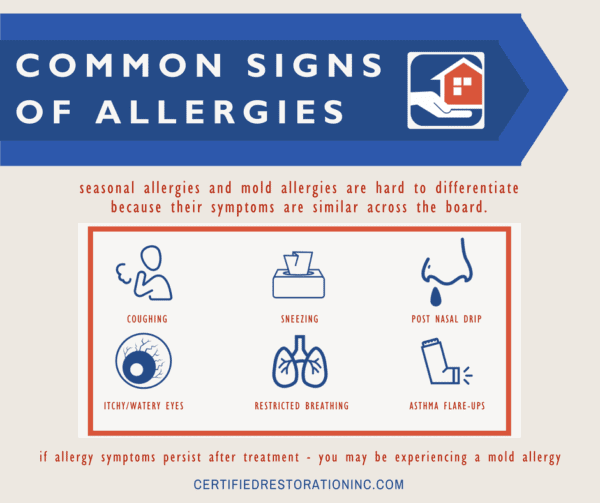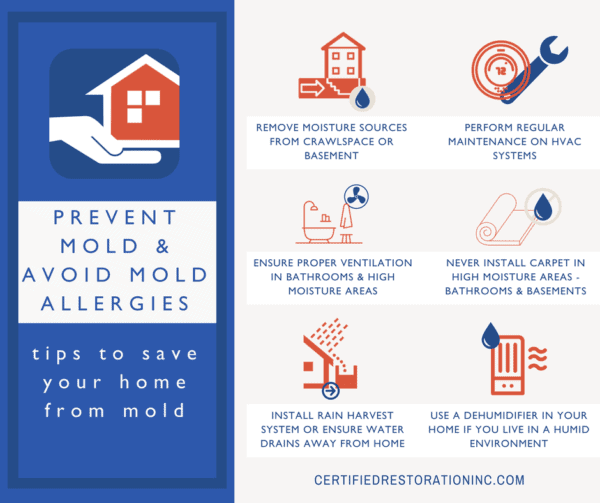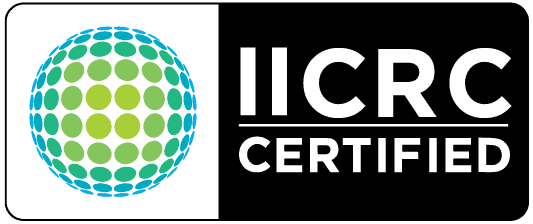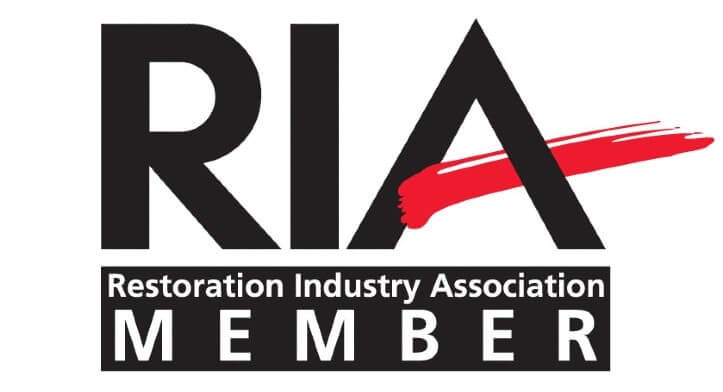As San Diego enters a new allergy season this spring, you may wonder if your allergy symptoms are caused by something other than seasonal triggers. If you’re relying on over-the-counter allergy medications but still feeling unwell, it could be due to mold issues in your home. Allergy and asthma sufferers are particularly vulnerable to flare-ups triggered by inhaling mold spores.
Symptoms of Mold Allergies
Symptoms of mold allergies mirror those of typical allergies. While allergy medications can alleviate symptoms from seasonal or environmental allergens, if mold spores are the cause, your symptoms will likely persist until the underlying mold issue is addressed. Common symptoms include:
– Coughing
– Sneezing
– Watery or itchy eyes
– Post-nasal drip
– Restricted breathing
– Asthma flare-ups

Complications from Mold Allergies
Long-term exposure to mold can severely impact your health. In addition to persistent allergy symptoms, mold can lead to serious respiratory conditions such as:
– Mold-induced asthma
– Sinus infections
– Bronchopulmonary aspergillosis
– Pneumonitis
Understanding the Mold
Not all mold is created equal. While many mold types exist, certain common varieties can be particularly harmful, especially for those with allergies or asthma. Here are a few prevalent types found in San Diego:
– Alternaria: Often found in homes with moisture issues, this mold is especially problematic in warm, inland environments. It can spread easily and is known to trigger allergic reactions.
– Aspergillus: This common toxic mold can grow in carpets and upholstery, becoming hazardous when disturbed. It’s also often found in potted plant soil, which provides a food source.
– Cladosporium: When it grows indoors, this mold can be found in carpets, curtains, and upholstery that have been exposed to moisture. It can cause various health issues, including eye, ear, and sinus infections.
Signs of Mold and Where to Find It
Mold can be elusive, often hiding in dark, damp areas of your home. Here are ways to detect mold:
– Smell: Mold typically emits a distinct musty odor reminiscent of mildew.
– Sight: You may not see the mold itself, but signs like discolored paint, peeling wallpaper, or drooping walls and ceilings can indicate water damage.
Mold appears in various shapes, textures, and colors, including:
– Thread-like structures
– Clustered spots
– Colors ranging from black and gray to white and brown

Prevent Mold and Avoid Allergies
Moisture and unresolved water leaks are primary sources of mold growth. Here are steps to prevent mold-related allergies:
– Eliminate moisture sources in crawl spaces and basements.
– Maintain your HVAC system regularly.
– Change filters often; your A/C helps reduce moisture and filter out mold spores.
– Ensure proper ventilation in bathrooms—run the fan during and after showers.
– Avoid installing carpet in high-moisture areas like bathrooms and basements.
– Direct stormwater away from your home.
– Use a dehumidifier to manage humidity levels.

Protect Yourself – Hire a Professional
While there are DIY methods for mold removal, such as using vinegar or hydrogen peroxide, treating only the symptoms without addressing the root cause can lead to health risks and further damage to your home.
Mold often indicates a larger issue related to water damage or moisture. If left untreated, these problems can become costly for homeowners. For effective solutions, consider hiring a professional restoration company specializing in San Diego mold inspection and water damage restoration. They have the expertise and tools to address the root causes of mold, ensuring your home remains safe and healthy. Don’t compromise your well-being—get the professional help you need!





